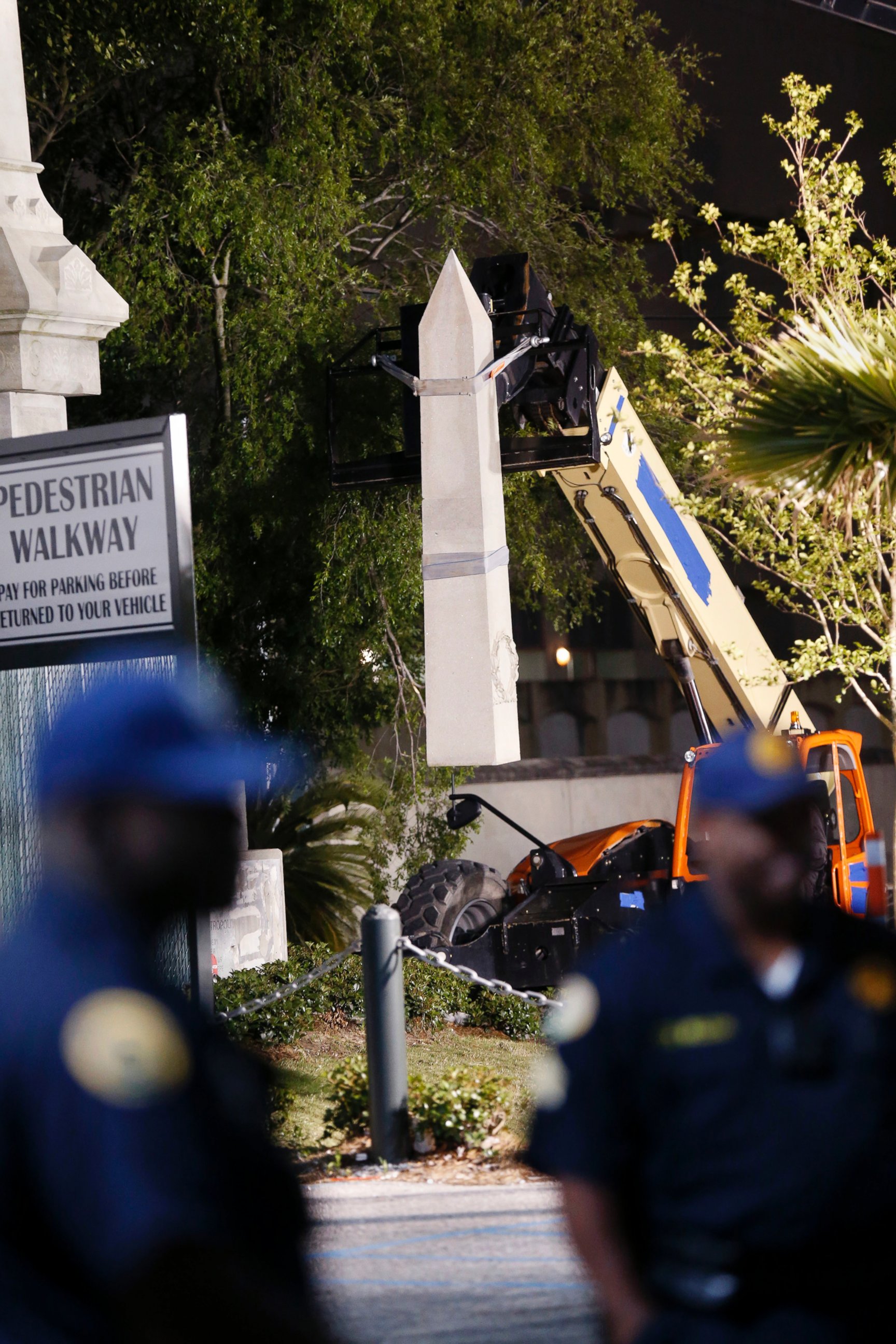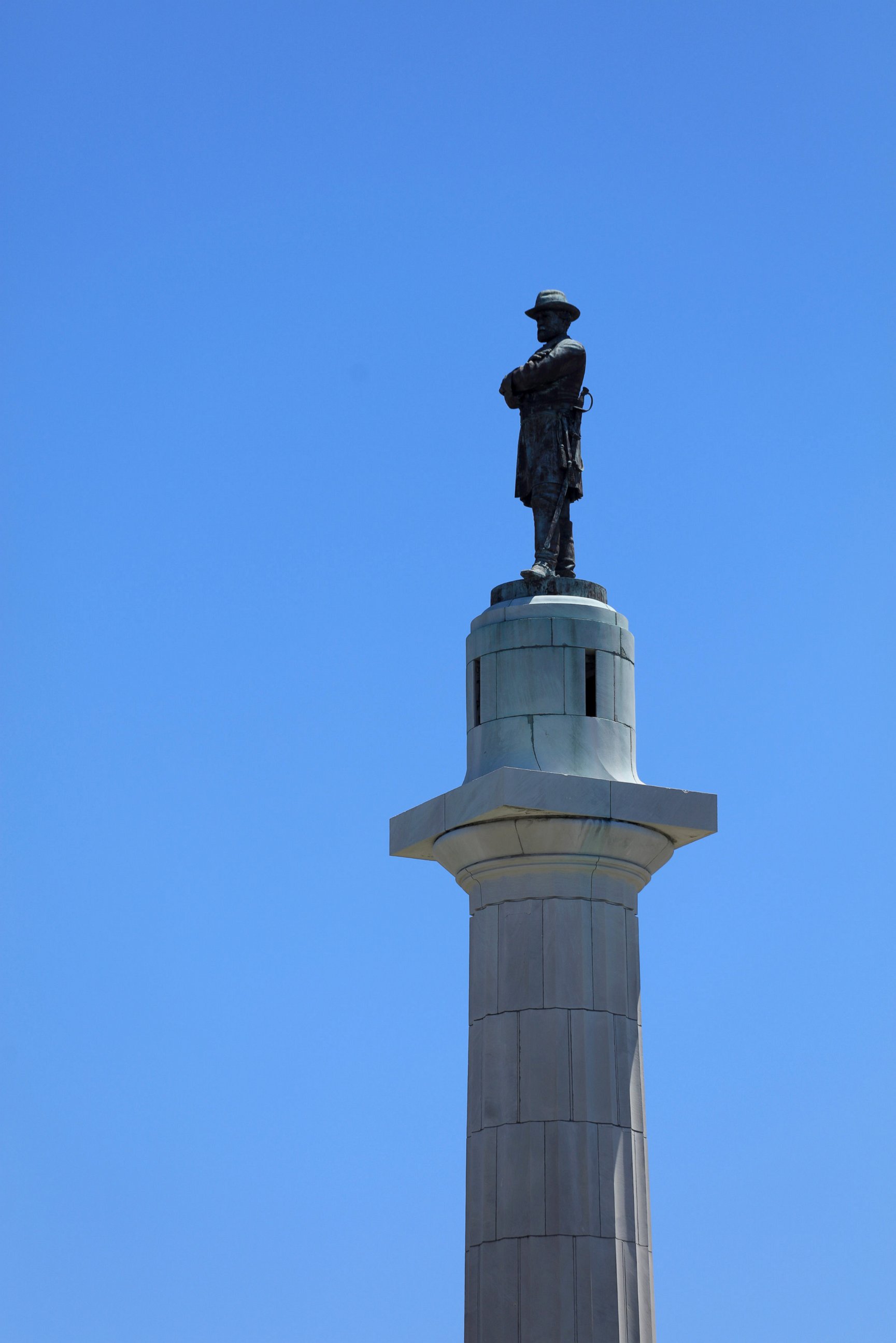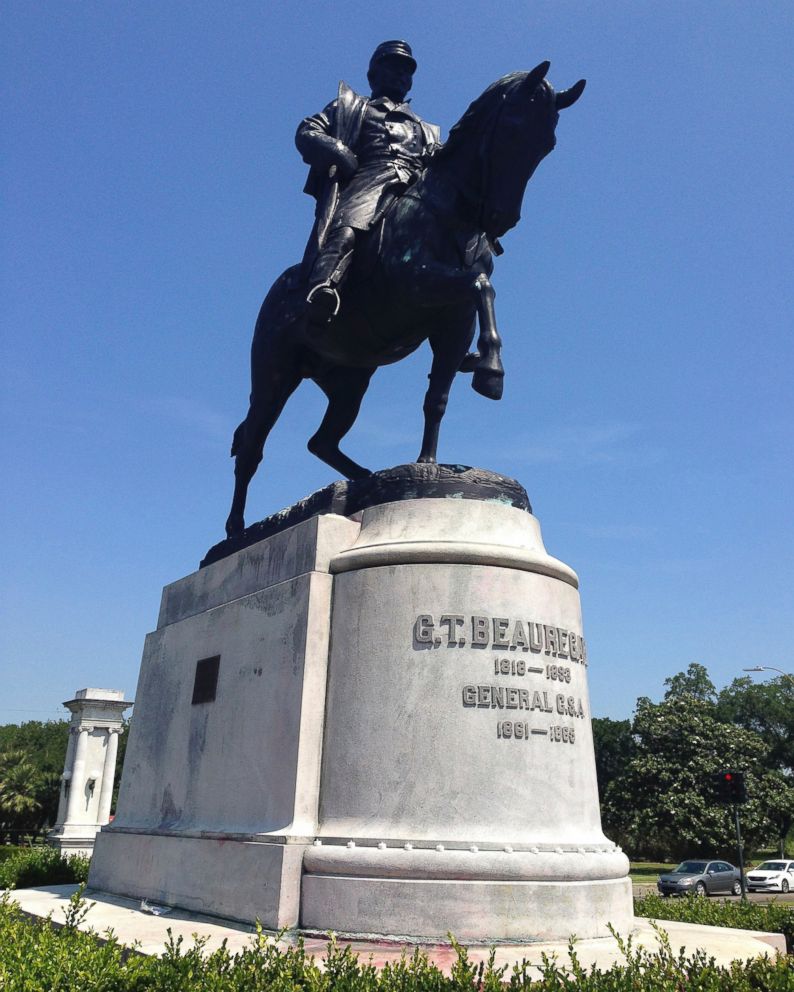New Orleans removes Confederate statues that honor 'Cult of the Lost Cause'
City officials say the "Cult of the Lost Cause" promotes white supremacy.
— -- As New Orleans began the process today of removing the remaining Confederate-era monuments in the Louisiana city, officials said they are facing “intimidation, threats and violence” amid their efforts to dismantle the statues that were erected decades after the Civil War to honor the “Cult of the Lost Cause.”
The city aims to take down four prominent Confederate-era monuments. The Battle of Liberty Place monument, which officials said was erected by the Crescent City White League to commemorate the deadly insurrection led by white supremacists against the city’s racially integrated police department and state militia, was removed in late April. The statue of Confederacy President Jefferson Davis statue was removed by early Thursday.
"Three weeks ago, we began a challenging but long overdue process of removing four statues that honor the ‘Lost Cause of the Confederacy.’ Today we continue the mission,” New Orleans Mayor Mitch Landrieu said in a statement Thursday. "These monuments have stood not as historic or educational markers of our legacy of slavery and segregation, but in celebration of it. I believe we must remember all of our history, but we need not revere it."

Workers removing the Davis statue wore full masks and the area was heavily guarded by police officers and snipers, presumably to prevent clashes between pro- and anti-monument groups.
The monuments slated to come down next are the Robert E. Lee statue and the P.G.T. Beauregard equestrian statue.
“Due to the widely known intimidation, threats, and violence, serious safety concerns remain. Therefore, the City will not share details on a removal timeline for the Robert E. Lee and P.G.T. Beauregard statues,” city officials said in a press release early Thursday.

The four monuments were erected between 1884 and 1915 to “celebrate the ‘Cult of the Lost Cause,’” a movement city officials say promotes white supremacy.
After removal, city officials said the statues will be crated and stored while they determine “a more appropriate place” to display them, such as a museum, “where they can be placed in their proper historical context from a dark period of American history.”

The Cult of the Lost Cause emerged at the end of the Civil War when the Confederacy had lost. The movement is made up of those who haven’t accepted the outcome of the war 152 years later.
The Cult espouses a number of controversial principles, including that slavery was a benevolent institution, that the war was caused by the states’ secession and not slavery, and that African slaves were loyal to their masters and the Confederate cause.
The movement also asserts that the Confederacy was defeated militarily only because of their opponent’s overwhelming advantages in men and resources. Confederate figures such as General Lee are revered as heroic and saintly.

Historians describe the deeply rooted phenomenon as a distortion of history by white Southerners.
“In attempting to deal with defeat, Southerners created an image of the war as a great heroic epic,” documents filed with the National Register of Historic Places state. “There was an element of chivalry in the way the South had fought, achieving noteworthy victories against staggering odds. This was the ‘Lost Cause’ as the late nineteenth century saw it, and a whole generation of Southerners set about glorifying and celebrating it.”
That glorification manifested in many forms, including organizations and countless memorials.
In 2016, the Southern Poverty Law Center documented over 1,500 symbols of the Confederacy and “the myth of the Lost Cause” in public spaces as part of its report “Whose Heritage?” The U.S.-based organization, which monitors hatred and prejudice, has encouraged local governments to move the symbols to settings such as museums where people can learn the full history of the Confederacy.
ABC News' Karma Allen and Jason Volack contributed to this report.




